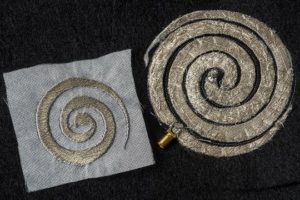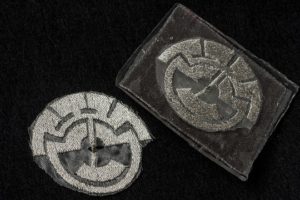With an 0.1 mm precision in embroidering circuits into fabrics, The Ohio State University have reached a new milestone in developing wearable electronics. This advance is the next step toward designing functional textiles-clothes that gather, store or transmit digital information. Upcoming developments could lead to clothes acting as antennas for smartphones and tablets. Workout clothes could monitor fitness levels and bandages could report the level of healing.
Wearable Electronics and the Textile industry
“A revolution is happening in the textile industry,” says John Volakis, Director, Electro-Science Laboratory, Ohio State. “We believe that functional textiles are an enabling technology for communication and sensors. One day even medical applications like imaging and health monitoring could employ them.”
“For the first time, we’ve achieved the accuracy of printed metal circuit boards. Our new goal is to take advantage of this precision and incorporate other electronic components.” added Volakis. The shape of the embroidery determines the frequency of operation of the antenna or circuit, explains research scientist Asimina Kiouriti. She says, “Shape determines function. And you never really know what shape you will need from one application to the next. So we wanted a technology that could shape designs for any application”
Manufacturing & cost cutting
In his lab, the “e-textiles”, are created by a typical sewing machine. It embroiders thread into fabric automatically, based on a pattern loaded into a computer. Even after substituting the thread with fine silver wires, the embroidery feels the same as traditional thread on touch. With patents pending for methods to create cheaper prototypes in lesser time, they published the new results in the journal IEEE Antennas and Wireless Propagation Letters. With a single broadband antenna requiring about 10 feet of metal wire, the cost comes down to about 3 cents per foot when buying by the spool.

Electro Science Lab
Photo by Jo McCulty
The Ohio State University

Electro Science Lab
Photo by Jo McCulty
The Ohio State University
A spiral shaped prototype antenna that can help in improving cell phone signal reception has been developed. Another prototype, an RFID chip embedded in rubber, is a stretchable antenna with wide variety of uses. They may be decorative, but the antennas actually work. Performance suggests that these could be well suited to a very wide variety of communication. Simply stating your clothes could get you a better reception in the future.
The complete news story could be found at: https://news.osu.edu/news/2016/04/13/computers-in-your-clothes-a-milestone-for-wearable-electronics/






